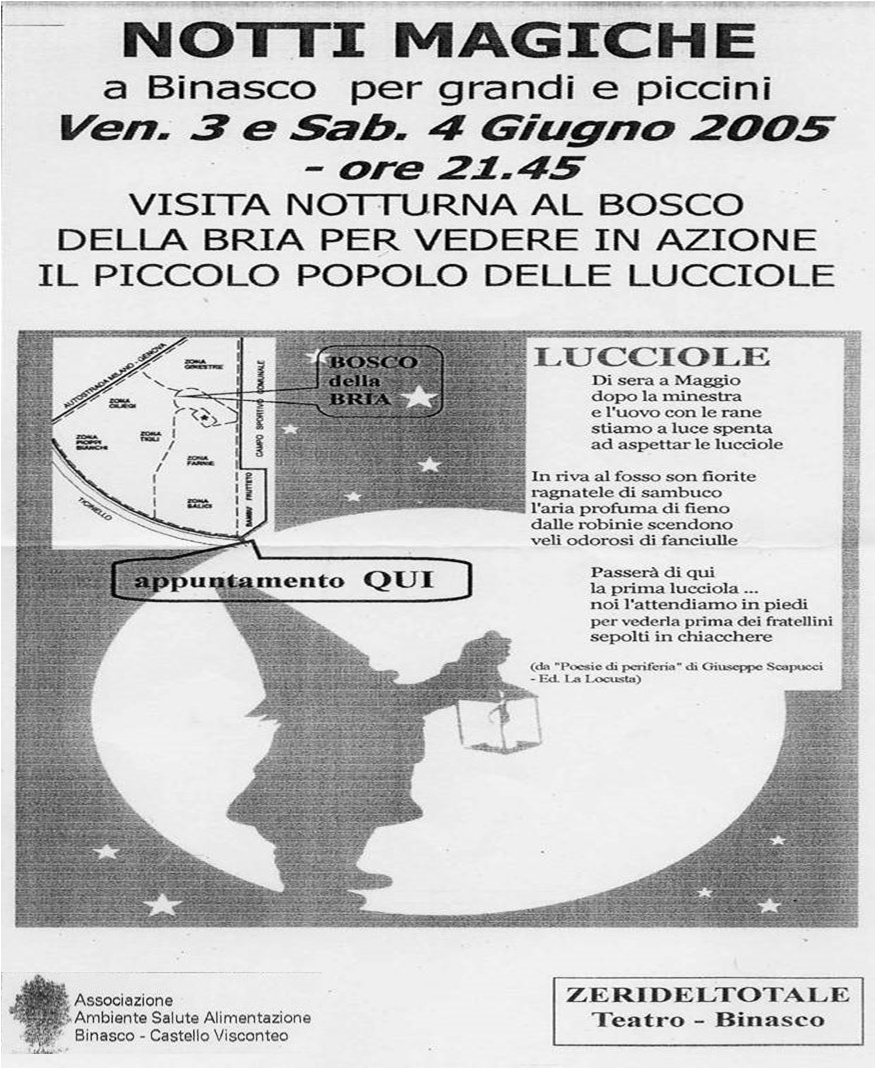What was the trend of firefly populations in Italy in the past decades? Have firefly populations been coming back recently? It is difficult to answer those questions, because in Italy at the moment a monitoring project does not exist, differently from other Nations; therefore data are not available to support any theory. Anyway, it sounds reasonable to hypothesize that a significant decrease in firefly abundance has occurred in the last decades. Such a perception was expressed by the writer and poet Pier Paolo Pasolini who published an article in the Italian newspaper “Corriere della Sera” well known as “articolo delle lucciole” (Pasolini, 1975). It sounds reasonable, as well, to support the idea that in areas where conservation projects have been implemented (i.e. natural reserve establishments) firefly populations have been benefited as well.

Anyway, threats coming from critical factors such as urbanization, light pollution or agriculture intensification are not less impacting than they were in the past. Therefore it is difficult to assess whether the growth of firefly populations that has recently been locally recorded can have balanced the negative effects on firefly community coming from the general ongoing environmental degradation.
Projects aimed at monitoring firefly populations have been activated in several Countries. For example, in the UK such a project is aimed at assessing both trends and distribution of Lampyris noctiluca and Phosphaenus hemipterus (www.glowworms.org.uk). This is a good example of citizen science, as both researchers and firefly enthusiasts are involved in the plan.
Similarly, that happens in Switzerland (http://www.gluehwuermchen.ch/), Spain (http://www.gusanosdeluz.com/gusanosdeluz/), Belgium (https://www.natuurpunt.be/afdelingen/glimwormenwerkgroep), USA (https://www.massaudubon.org/get-involved/citizen-science/firefly-watch) and in Malaysia (https://malaysianfireflies.wordpress.com/). Moreover, all the researchers involved in those projects are connected thanks to an international network (https://fireflyersinternational.net/). Information on firefly biology is also available on the website of Raphael De Cock (https://rdecock.wixsite.com/raphaeldecock-1draft/).
In many parts of Italy volunteers for associations for nature conservation every year successfully organize “magic nights” devoted to the observation of fireflies in their habitat. Such magic nights are important, because they contribute to introduce citizens from big towns to green areas on the outskirts like, for example, the agricultural Park “Sud Milano”, which preserves from urbanization the countryside belt located south of the City.
